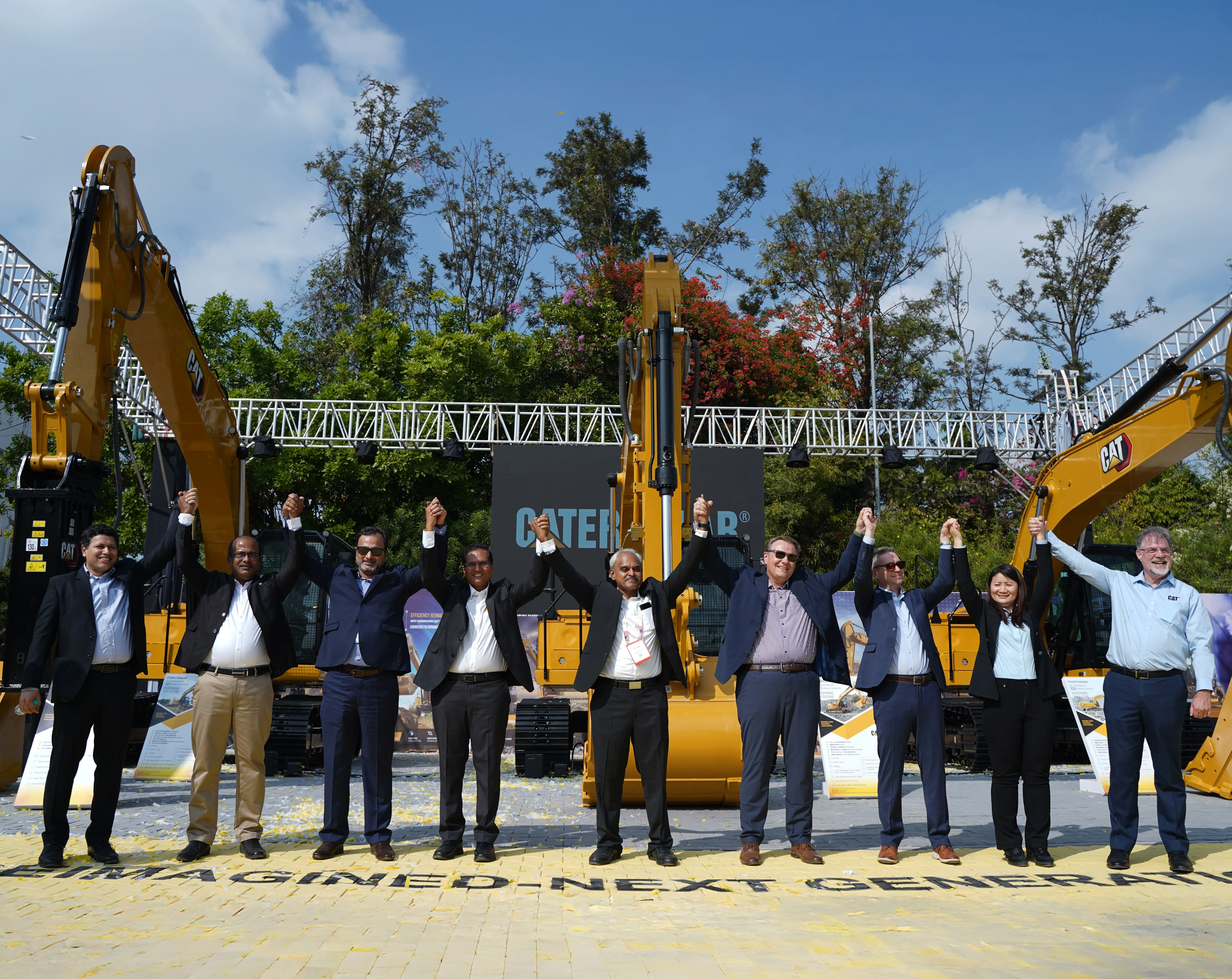India is among the few nations with a below 2-degree compatible NDCs (Nationally Determined Contributions) under the Paris Climate Agreement. In this context, India’s cement industry has a major role to play in the sustainability of the heavy-industries segment. As India grows, there will be greater investment in infrastructure development – already visible in the Union Budget 2021-22 – which will, in turn, necessitate higher cement consumption. This makes it imperative for the cement industry to manufacture more cement with optimum utilisation of resources and energy.
Roadmap to Sustainability
Accordingly, Dalmia Cement has laid down its long-term direction as well as medium-term and short-term targets. Additionally, the Company has adopted the Sustainable Development Goals in its own capacity for faster realization of SDGs near its manufacturing locations. These sustainability initiatives have won global appreciation.
In September 2019, the UN Secretary-General acknowledged these initiatives, inviting Dalmia Cement to speak at its Climate Action Summit. Speaking at the 2020 Summit, Mahendra Singhi, MD & CEO – Dalmia Cement (Bharat) Ltd emphasised that the time to act is now, given the unprecedented climate challenge. Here, he announced a slew of measures for taking the Company’s sustainability leadership to a higher orbit by creating new benchmarks in green cement manufacturing at the global level. Mr Singhi highlighted Dalmia Cement’s collaborations with stakeholders worldwide for realising its carbon negative roadmap with specific reference to the scalable deployment of deep decarbonisation technologies such as 100% renewable electricity, energy efficiency improvements and Carbon Capture and Utilisation in his transition-approach speech.
Not surprisingly, these measures mean the Company has to question every industry convention. Each decision now faces the filter, “Will it be good for the Earth?” before coming to “Will it be good for the Group?” Thanks to this, the ‘green’ quotient of the cement the Company manufactures has increased because new priorities, practices and investments have been merging.
Interestingly, Dalmia is the only cement company to declare its commitment to turn carbon negative by 2040. Backed by numerous initiatives towards this objective, it is ranked No.1 on business readiness for a low carbon transition (CDP Global Cement Sector Report, April 2018). Making its ‘Carbon Negative 2040’ dream a reality requires a multi-stakeholder approach. This includes collaborative efforts of R&D organizations, innovators, technology disrupters and policymakers. On its part, the Company is willing to offer its plants while sharing investments and resources for promoting innovative technologies. Dalmia Cement has also partnered with the International Finance Corporation to promote sustainable business.
Among others, the vision of turning carbon negative by 2040 is being implemented by:
100% substitution of conventional fuels to green fuels, natural gas and heat electrification
Switching to green power generation
Reducing clinker factor in incremental stages
Optimizing the specific heat consumption of the clinker
Shifting to solar drying for relevant raw materials
Developing a new range of low carbon cement
Lowering process emissions through technological disruptions
A broad perspective of some measures is outlined below.
Alternative Fuel Resource: Dalmia Cement enhanced its standing as an ‘industrial waste disposer’ by repurposing waste via the use of alternative fuels such as plastic, wood, tannery, ETP sludge, waste paper, carbon black, fibre-reinforced polymer, footwear, spent wash, solid waste mix, refuse-derived fuel, dry waste mixed liquid, palm bunch, chocolate wrappers and as alternative raw materials – fly ash, BF slag, red mud, etc.
Lower average carbon footprint: The Group-level carbon footprint of 536 kilograms of carbon dioxide per tonne of cement product in FY2020 compared favourably with about 546 kilograms of CO₂ per tonne of the same in 2019. Incidentally, the global average of carbon footprint in kilogram per tonne of cement is 900. Dalmia Cement’s targeted carbon footprint will be negative by 2040.
The Group undertook new ambitions and commitments to progress in this clean energy transition. As the future was being mapped, one thing became clear: to be a leader, the organisation needed to view climate change as a business opportunity rather than a risk.
To begin with, the focus was on material and resource efficiency. For this, the Company produces high-blended cements with the best available technology by using various industrial waste products such as BF slag and fly ash. Today, the high-blended cements are sold as both premium and green products. In other words, these are technically superior and durable cements while being low carbon products. The Company is now the largest producer of slag cement in India (low carbon green cement).
EP 100 and RE 100 Campaigns
Dalmia Cement’s energy productivity has doubled compared to 2005 levels. To further improve energy productivity, the Company has joined the EP 100 initiative. Through this, it remains committed to doubling energy productivity by 2030. Globally, it’s the first company to join both the Energy Productivity (EP 100) and Renewable Energy (RE 100) campaigns by The Climate Group. EP 100 is an ambitious voluntary campaign by Dalmia Cement to double energy productivity (EP 100) by 2030.
RE 100 refers to the Company’s fossil-free electricity initiative. The 22nd session of the Conference of Parties (COP-22) on 11 November 2016 at Marrakesh in Morocco witnessed a novel development when a core manufacturing sector company Dalmia Cement joined RE 100 – an ambitious campaign of leading global conglomerates. The Company was the only one from the world’s cement sector committing to a long-term renewable energy transition.
One of the core components of the Company’s ‘Green to Greener’ roadmap is its fossil-free electricity initiative. The need for the initiative arose due to two reasons: (a) preparing its operations for futuristic costs of energy-related externalities (b) tapping the savings opportunities of a clean energy transition.
Under the initiative, 40 MW green power generation potential through waste heat recovery from exit gases in its integrated cement plants have been identified. A 10 MW project is under implementation and another 9 MW one is under the final approval stage. In a significant thrust to renewable electricity generation, Dalmia Cement has commissioned 8 MW captive solar PV projects in its Eastern India operations. Another 12 MW solar PV project and varied rooftop solar PV projects are under diverse stages of implementation.
By harnessing such opportunities, the Group found it could safeguard growth plus play its part in delivering a zero-carbon future, faster. Globally ranked No.1 by CDP (formerly Carbon Disclosure Project), the Company has achieved the cement world’s lowest carbon footprint, which is 40% lower than the global average for any cement company. This has been achieved by focusing on material and resource efficiency, including the use of industrial waste such as slag and fly ash as alternative raw material to make high-blended premium cements and energy efficiency measures and by greater use of alternative and renewable sources of energy.
Moreover, profitability in terms of EBIDTA/ton is one of the best among cement companies in India. This validates the organisation’s philosophy that a clean and green company has a profitable and sustainable future. The overriding purpose of this philosophy is to create business opportunities in reducing CO₂ emissions through a mutually-beneficial approach.
Apart from the focus on renewable energy as part of its sustainability mission, the Group is working to save another precious resource – water. To insulate the Group from the physical risks of climate change, the challenge to become a water positive cement entity was announced in 2014. By 2018, being a five times water positive cement company was a reality. Motivated by the results, the Company has resolved to become 10 times water positive by 2025.
Alternative Fuels and More
Coming to alternative fuels, Dalmia Cement is switching from fossil fuels to green ones, including biomass. The use of industrial and municipal wastes has been accelerated to replace fossil fuels in pyro processing, helping avoid fuel-related CO₂ emissions. At a group level, a 4% Thermal Substitution Rate (TSR) has been reached, compared to barely 0.5% five years ago. Also, pockets of excellence have been developed in some plants where almost 18% of TSR has been achieved.
This segment will offer more potential in India if prevailing policies turn more conducive for advancing the use of alternative fuels in cement kilns. Alternative fuels augment the Group’s profitability while simultaneously minimising GHG (greenhouse gas) emissions from cement operations. Furthermore, fuel feeding systems are being buttressed with investments to make more use of both solid and liquid alternative fuels.
An objective-oriented roadmap has been created to boost alternative fuel use in the Group to reach levels of 30% (by 2023), 70% (2030) and 100% (2040). To reach these ambitious levels of alternative fuels usage, Dalmia Cement is embarking on the journey of growing selective energy crops (such as bamboo, which absorbs carbon dioxide) to use it in co-processing, apart from increasing the utilization of waste-derived fuels.
Climate change remains a global threat that can no longer be ignored – as is apparent from periodic climate mishaps occurring worldwide, which includes the recent glacier-burst flash flood tragedy in Uttarakhand. In January 2020, displaying its future-ready approach and in an endeavour to participate in building the future of industry and the economy via a focus on Nature, People and Planet, Dalmia Cement pledged support to HRH Prince Charles for the green initiative Terra Carta – a sustainable roadmap to 2030 for businesses to move towards an ambitious and sustainable future. Terra Carta will harness the power of Nature combined with the transformative power, innovation and resources of the private sector.
Elaborating on this campaign, Mr Singhi asserted that the future of industry and economy is well vested in the future of Nature, People and Planet. The COVID-19 outbreak has made it amply clear that the economy and industry form an integral bond with ecosystem services provided by Mother Nature. Since the buildings and construction sectors leave a heavy carbon trail, it is incumbent on the allied cement industry to contribute its mite in lowering CO₂ footprints.
Undoubtedly, the present generation owes it to their children to leave behind a better planet than they inherited. Dalmia Cement’s blended cements portfolio and sustained investments in low carbon technology are aimed at driving such sustainability initiatives and leaving our children a cleaner, greener planet.
--------------------------------------------------------------------------------------------------------------------------------------
Ashwani Pahuja is the Chief Sustainability Officer at Dalmia Cement (Bharat) Ltd. He is also the past Director General of National Council for Cement and Building Materials, holds a post graduate degree in Chemical Engg. from Panjab University.





















